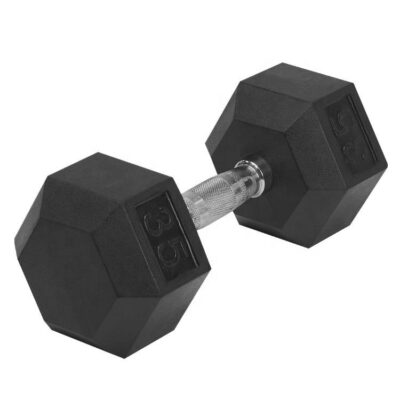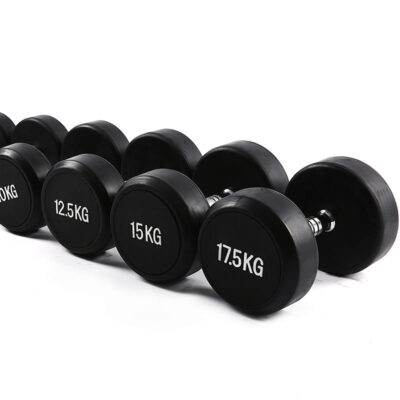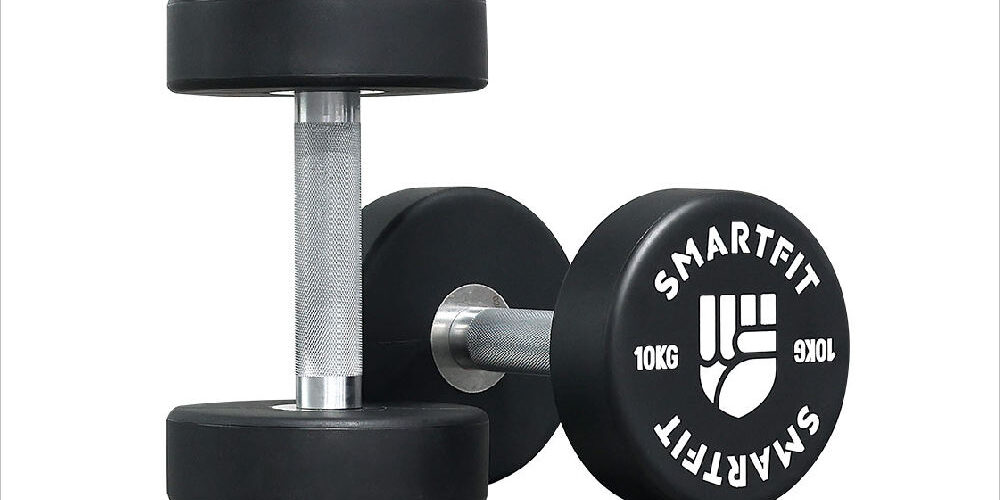Why QA Matters in Dumbbell Manufacturing
✔️ Consistency Across Batches
Wholesale orders often span tons of equipment. Without strict QA, inconsistencies in hardness, finish, or adhesion can ruin an entire shipment.
✔️ Buyer Confidence
Global clients demand test reports and compliance certificates. Documented QA gives procurement managers assurance that products meet safety and durability standards.
Step 1 — Raw Material Inspections
🔹 Rubber Compounds
Factories should test Shore A hardness before molding. Virgin rubber ensures lower odor and stable durometer values.
🔹 Steel Cores
Check tensile strength and verify plating thickness. Substandard steel leads to premature handle bending.
Top Dumbbells Wholesale suppliers document all incoming material checks, ensuring only certified steel and rubber enter production.
Step 2 — In-Process Quality Testing
📌 Durometer Testing
Rubber and urethane coatings must meet hardness specifications (80–90 Shore A).
📌 Adhesion Tests
Chemical bonding or over-molding must pass pull tests to ensure coating won’t peel.
📌 Weight Tolerance Checks
Standard tolerance is ±3%; premium factories achieve ±1–2% for competitive training markets.
Step 3 — Final Product Testing
✔️ Drop Tests
Simulate real-world gym use by dropping dumbbells thousands of times. Ensures bonding and coating durability.
✔️ Salt-Spray Testing
Measures corrosion resistance of handles and plates, important for humid storage or coastal gyms.
✔️ Abrasion Resistance
Tests confirm logos and coatings withstand years of re-racking without fading.
Trusted Weight Plate Manufacturers use similar QA procedures, ensuring compatibility between dumbbell and plate finishes.
Step 4 — Compliance & Certifications
✅ ISO 9001 / 14001 – Quality and environmental management.
✅ REACH / RoHS / CA65 – Chemical safety for EU and US markets.
✅ BSCI / SMETA – Ethical manufacturing audits.
Buyers should always request third-party lab reports with each batch.
Step 5 — Packaging & Shipping QA
📦 Packaging Strength Tests
Cartons and pallets must withstand stacking in containers.
📦 Moisture Control
Factories should use silica gel packs and stretch wrapping for sea shipments.
📦 Palletization Standards
Euro pallets (1200×800 mm) or standard (1200×1000 mm) ensure safe stacking inside containers.
Step 6 — Common QA Failures to Avoid
⚠️ Rubber Odor Complaints
Caused by poor curing or recycled compounds.
⚠️ Handle Rusting
Indicates insufficient plating thickness or failed salt-spray tests.
⚠️ Head Separation
Poor adhesion between core and coating; solved with chemical bonding and strict QC.
Step 7 — Buyer Checklist Before Approval
✔️ Request batch-specific durometer and adhesion test reports.
✔️ Insist on drop test certificates for rubber hex and urethane lines.
✔️ Validate coating resistance through salt-spray and abrasion results.
Final Thoughts for Procurement Teams
A factory’s QA playbook is as important as its production capacity. By enforcing rigorous material checks, in-process inspections, and final product tests, buyers reduce risks of costly returns and strengthen long-term supplier relationships.
Sourcing from established Dumbbells Wholesale suppliers and aligning QA protocols with certified Weight Plate Manufacturers ensures consistent quality across the entire free-weight ecosystem.

















